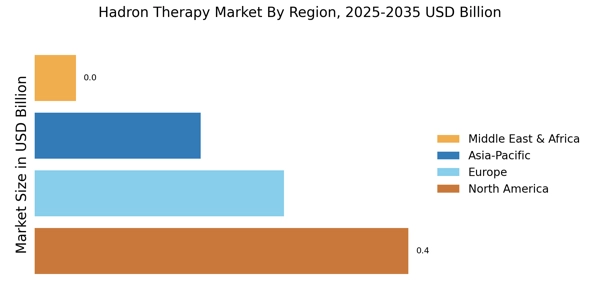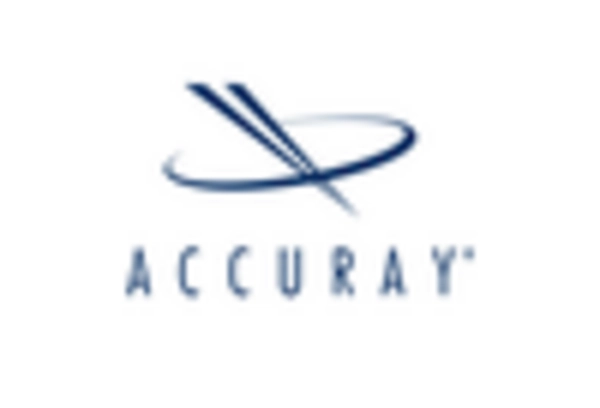Technological Innovations
Technological advancements play a crucial role in shaping the Hadron Therapy Market. Innovations in particle acceleration and imaging technologies have enhanced the efficacy and safety of hadron therapy treatments. For instance, the development of compact cyclotrons and synchrotrons has made hadron therapy more accessible and cost-effective. Additionally, advancements in treatment planning systems and real-time imaging techniques have improved the precision of tumor targeting, minimizing damage to surrounding healthy tissues. As these technologies continue to evolve, they are likely to attract more healthcare facilities to adopt hadron therapy, thereby expanding the market. The integration of artificial intelligence and machine learning in treatment planning may further optimize patient outcomes, indicating a promising future for the hadron therapy sector.
Increasing Cancer Incidence
The rising incidence of cancer worldwide is a primary driver for the Hadron Therapy Market. As cancer cases continue to escalate, the demand for advanced treatment modalities, such as hadron therapy, is likely to increase. According to recent statistics, cancer is projected to affect one in two individuals during their lifetime, necessitating innovative treatment options. Hadron therapy, with its precision targeting capabilities, offers a promising alternative to conventional therapies, potentially improving patient outcomes. This growing patient population is expected to propel investments in hadron therapy facilities and research, thereby expanding the market. Furthermore, the increasing awareness of the benefits of hadron therapy among healthcare professionals and patients may further stimulate market growth, as more individuals seek out these advanced treatment options.
Government Support and Funding
Government initiatives and funding are pivotal in driving the Hadron Therapy Market. Many countries are recognizing the potential of hadron therapy in cancer treatment and are investing in research and infrastructure development. For example, several governments have allocated substantial budgets for the establishment of hadron therapy centers, aiming to enhance treatment accessibility. This financial support not only facilitates the construction of new facilities but also encourages collaborative research efforts among academic institutions and industry players. Furthermore, public health policies promoting advanced cancer treatments are likely to bolster the adoption of hadron therapy. As governments continue to prioritize cancer care, the market for hadron therapy is expected to experience significant growth, driven by increased funding and supportive regulatory frameworks.
Rising Awareness and Acceptance
The growing awareness and acceptance of hadron therapy among patients and healthcare providers are significant drivers for the Hadron Therapy Market. Educational campaigns and outreach programs have been instrumental in informing stakeholders about the benefits of hadron therapy, including its precision and reduced side effects compared to traditional treatments. As more patients become informed about their treatment options, the demand for hadron therapy is likely to rise. Additionally, endorsements from oncologists and healthcare professionals can enhance the credibility of hadron therapy, leading to increased referrals. This shift in perception is expected to contribute to a broader acceptance of hadron therapy as a viable treatment option, thereby expanding the market. The increasing number of success stories and clinical trials supporting its efficacy may further solidify its position in cancer treatment.
Collaborative Research and Development
Collaborative research initiatives among academic institutions, healthcare providers, and industry stakeholders are driving innovation in the Hadron Therapy Market. These partnerships facilitate the sharing of knowledge, resources, and expertise, leading to the development of new treatment protocols and technologies. Collaborative efforts often result in clinical trials that validate the effectiveness of hadron therapy, thereby enhancing its credibility in the medical community. Furthermore, joint ventures can lead to the establishment of specialized centers dedicated to hadron therapy, increasing patient access to these advanced treatments. As research continues to evolve, the insights gained from collaborative projects are likely to inform best practices and improve patient outcomes, ultimately contributing to the growth of the hadron therapy market.


















Leave a Comment